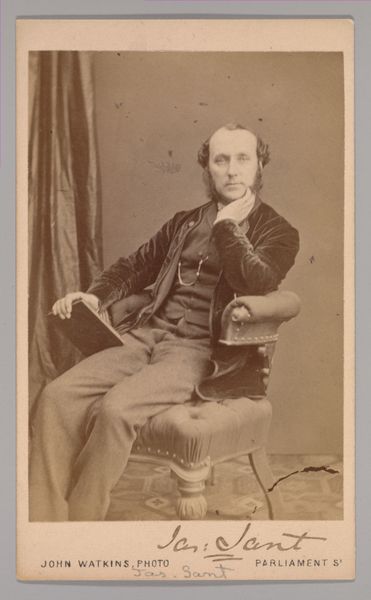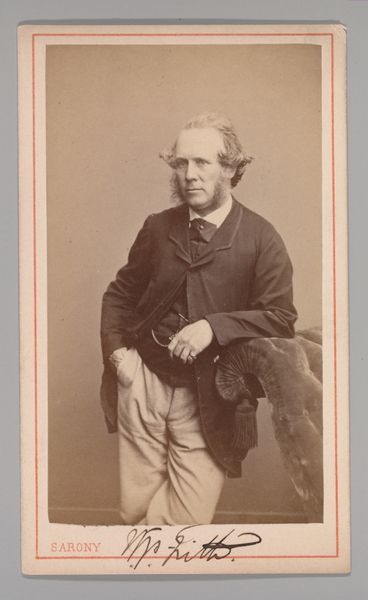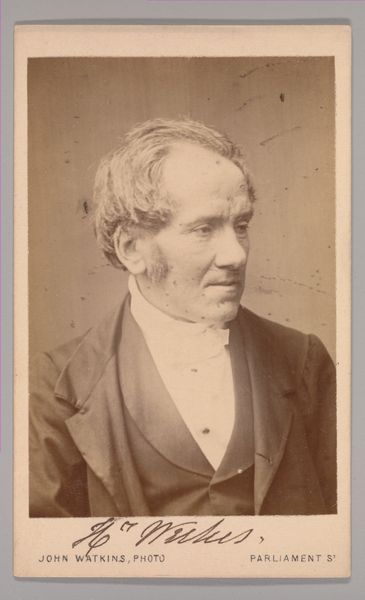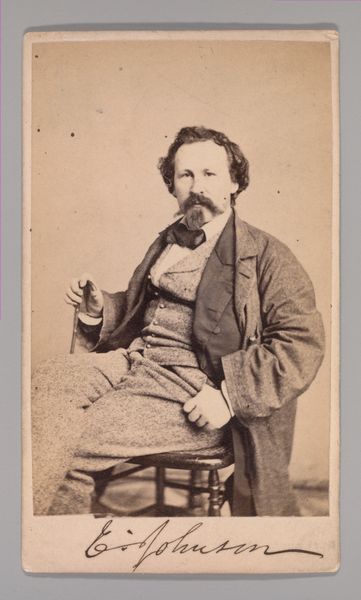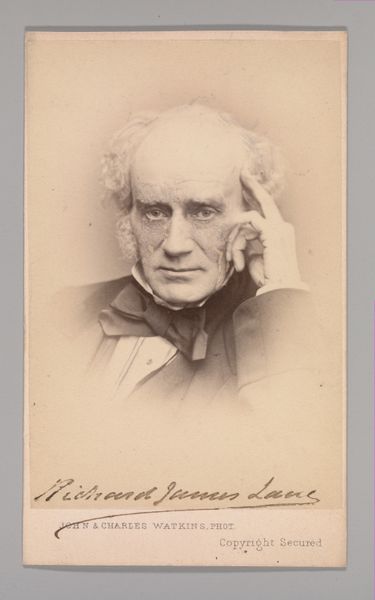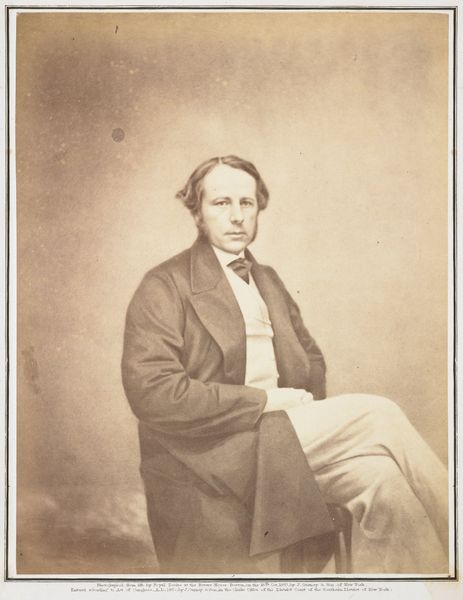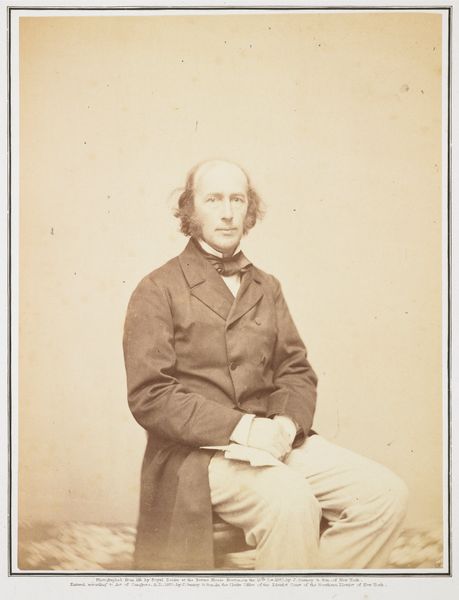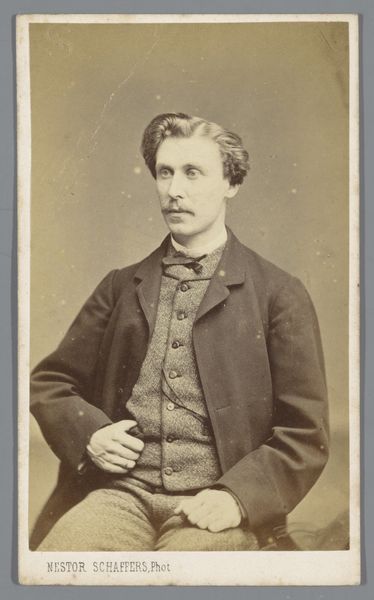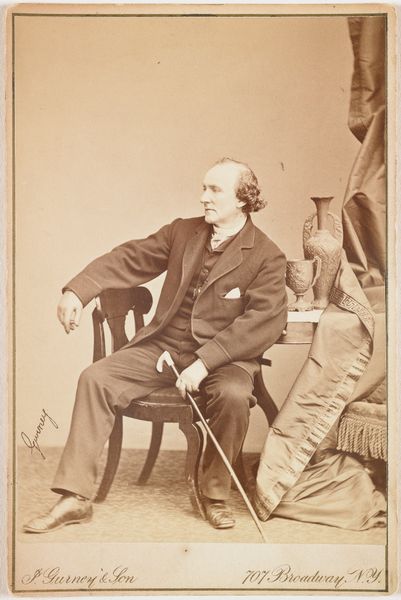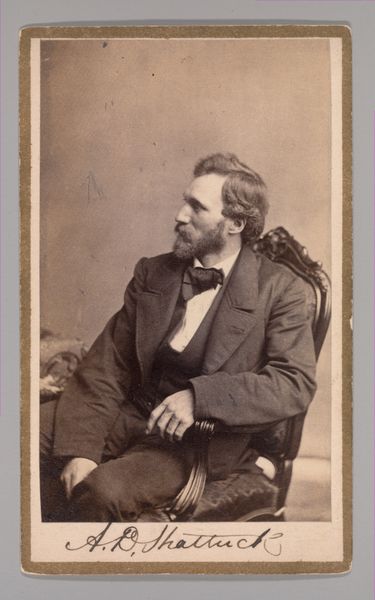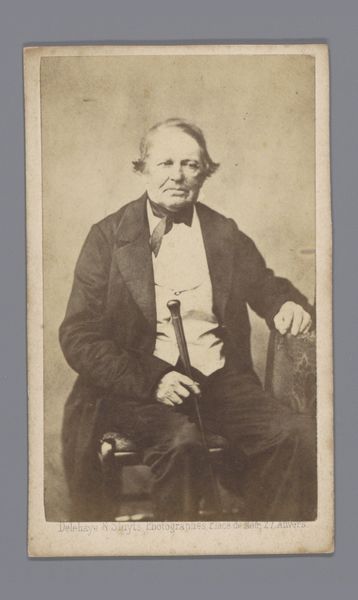![[Joseph Durham] by John and Charles Watkins](/_next/image?url=https%3A%2F%2Fd2w8kbdekdi1gv.cloudfront.net%2FeyJidWNrZXQiOiAiYXJ0ZXJhLWltYWdlcy1idWNrZXQiLCAia2V5IjogImFydHdvcmtzLzBmZTlhMmZiLTFjNDEtNDhlNS1iZTJkLWRiZTY5MzczYWQwYS8wZmU5YTJmYi0xYzQxLTQ4ZTUtYmUyZC1kYmU2OTM3M2FkMGFfZnVsbC5qcGciLCAiZWRpdHMiOiB7InJlc2l6ZSI6IHsid2lkdGgiOiAxOTIwLCAiaGVpZ2h0IjogMTkyMCwgImZpdCI6ICJpbnNpZGUifX19&w=3840&q=75)
#
portrait
#
pencil drawn
#
photo of handprinted image
#
light pencil work
#
photo restoration
#
pencil sketch
#
portrait reference
#
framed image
#
white focal point
#
men
#
paper medium
#
remaining negative space
Dimensions: Approx. 10.2 x 6.3 cm (4 x 2 1/2 in.)
Copyright: Public Domain
Curator: This photographic print from the 1860s, entitled "[Joseph Durham]", was created by John and Charles Watkins and resides here at The Met. Editor: It's striking. There's an inherent softness to the sepia tones and light pencil work, and how the subject leans contemplatively adds a feeling of introspective quiet. Curator: The image quality is definitely showing the effects of time, but these marks of age almost become part of the material story here. Early photographic processes were laborious, requiring careful attention to chemical preparations and long exposure times. Consider what that means about the access and privilege required to have a portrait made. Editor: Indeed, the image's composition emphasizes a classical balance, almost symmetrical. Light subtly illuminates one side of his face, contrasting gently with the shadows—beautiful chiaroscuro that enhances his refined features. Curator: Watkins' studio operated during a fascinating period, when photography was quickly transitioning from a novelty to a powerful means of representation. Portraiture democratized the visual language. Even a professional like Joseph Durham, with likely strong ties to industry, gains new visual importance when immortalized and shared through the print form. Editor: Yes, beyond its material status as photograph and the representation it allows, there's a strong evocation of character achieved through the details captured in his expression and attire—suggesting both refinement and world-weariness. Curator: Knowing this was intended to be reproduced as an inexpensive portrait certainly contextualizes that refined expression! Thanks to its materiality, Durham becomes infinitely reproducible, entering the stream of photographic history. Editor: An intriguing print—formally compelling, but made so much richer when grounded in history and the understanding of production. Curator: Precisely! Recognizing photography’s democratizing potential is paramount in interpreting its cultural resonance during the 19th Century and to this very day.
Comments
No comments
Be the first to comment and join the conversation on the ultimate creative platform.

